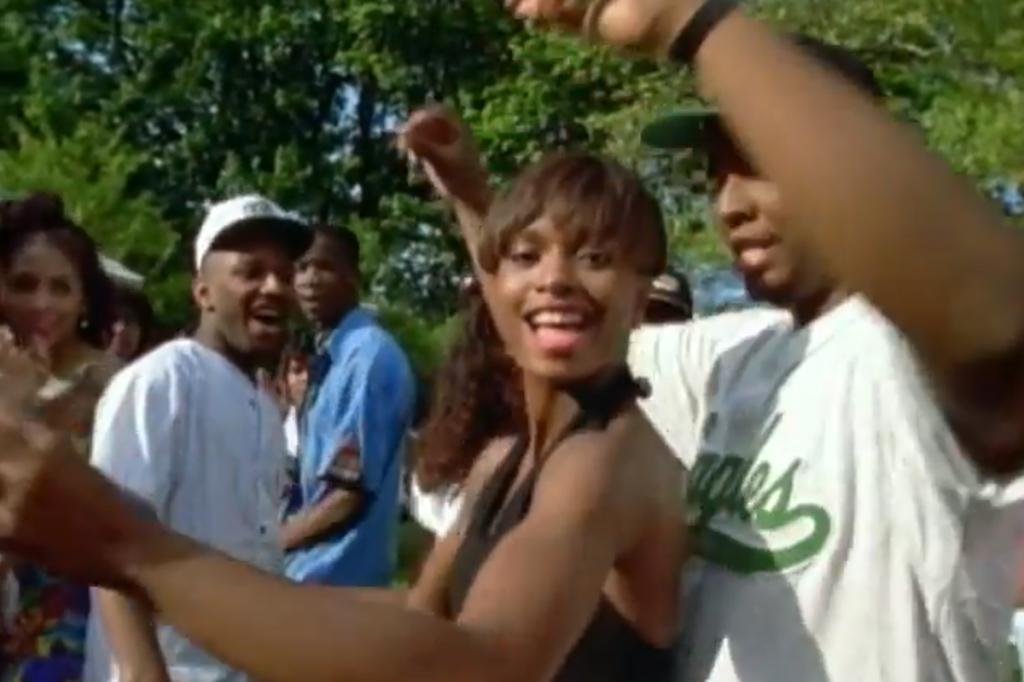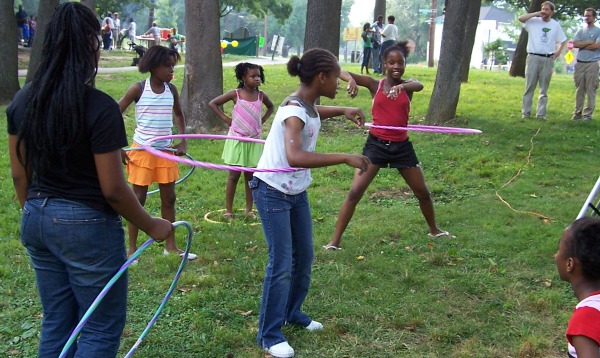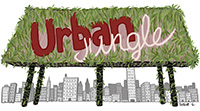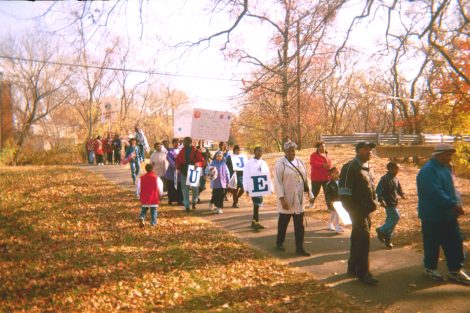
Community members march in the park.
Steve Coleman remembers arriving for his first day on the job as a community volunteer for the nonprofit Parks & People in Washington, D.C., more than 20 years ago. Standing on the street corner in front of a former after-hours club, looking toward a trash-strewn, overgrown, and heavily eroded streamside park not 20 yards away, he endured the taunts of a passerby. “White boy … white boy,” the man said as he sauntered down the sidewalk.
Coleman, who was born in India and raised in Pittsburgh, replied in his plainspoken tone, “I do have a name.”
Startled, the man tried to clarify the situation. He meant no offense: The term “whiteboy” was just local vernacular for a particular psychoactive substance on offer for willing customers. He was simply touting his wares.
Parks & People’s Riverside Center headquarters, it turns out, were located on the same intersection as one of the city’s most brazen illicit-drug supermarkets.
The next thing that needed to be cleared up was what Coleman was doing there. There were only three types of people who might reasonably be expected to show up at that spot, the man told him: Drug dealers, drug buyers — “or was I a cop?”
Well, four types. “You must be a developer, then,” the man said finally, finding it impossible to believe anyone coming into that impoverished, far northeast corner of Washington, D.C., would give a rat’s behind about the neighborhood or the people in it, much less the long-neglected park down the street.
So, why was he here? Judging from his enthusiasm and from the evident progress in creating a newly hospitable place in what was once considered, even by local government officials, a “no go zone,” it doesn’t seem likely Coleman has ever stopped to ask himself that question. Now Parks & People’s executive director, Coleman has been fighting for the environment since the age of 12, when he wrote a stern letter to the U.S. Forest Service demanding cleaner woodlands. Today, he views his job of reconnecting the community with the stream as a key to improving life for the neighborhood’s mostly poor, African American residents.
I met Coleman at that corner recently on a sunny midweek afternoon in front of the night spot where Marvin Gaye performed his first gigs as a budding R&B crooner back in the 1950s. It’s a sharp contrast to the neighborhood of Adams Morgan across town where college students and professionals enjoy high-energy cafes, nightclubs, shops, and workplaces, and where Coleman resides. A few doors down are a convenience store and a laundromat mingled with a couple of boarded-up shop fronts that attest to the spotty economics of the area.
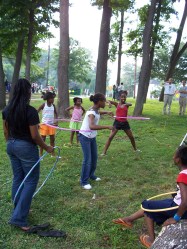
Across the street, however, is something those trendy spots don’t have: an expansive riverside park which is a center of activity. The crowd, mostly older folks, seems to be in good spirits and among friends. There is a game of checkers underway and at least one card game. Young children amble through the park and across Foote Street with their schoolbooks in hand to catch the bus home. Others stop off at a brand new playground on a quarter-acre clearing leavened with a generous cushion of woodchips, and equipped with colorful swing sets and jungle gyms.
Before Coleman arrived on the scene, the park was piled with nearly 30 feet of rubble that had evidently been hauled in from building and demolition projects elsewhere in the city. The city’s social problems were dropped off there and forgotten too, along with the poor and the homeless: The area that became the playground was known as a place where people would wander off to overdose.
It was the kids’ idea to turn the little clearing into a playground. To get things started, they first had to collect more than 15,000 hypodermic needles that had been dumped on the grounds, Coleman says. The trash went to legitimate landfills, and workers felled invasive trees. The project then attracted $400,000 in donations from Playworld Systems, Kompan, Playcore, and Surface America.
Today, in addition to the playground, the park boasts a natural amphitheater with a performance stage, providing excellent sightlines for crowds of up to 1,000 people. There’s also a weekend farmers market. Both venues were pioneered by neighborhood children, quietly subverting a dystopian drug bazaar that Coleman said didn’t quite have a response prepared for little kids having fun.
The stream, a tributary of the Anacostia River called Watts Branch, caught the attention of the U.S. Fish and Wildlife Service, which rehabilitated a 1.6-mile reach of the channel. It is now a picturesque series of vanes, weirs, and pools designed to mimic the ecology and dynamics of a natural stream channel, control erosion, and provide habitat for wildlife. The agency expects the improved stream will soon attract fish such as shad and American eel, and birds such as barred owls and blue herons.
And it’s not just wildlife that’s gaining here. Watts Branch also offers a glimpse of the kind of economic impact this kind of park and stream restoration can have on a down-and-out urban neighborhood.
The stream restoration project alone generated 26 full-time jobs. Workers repaired sewer lines, reintroduced natural meanders to a creek that had been turned into a glorified drainage ditch, and laid out erosion protection. A study by the U.S. Geological Survey released this spring found the project indirectly supported an additional 19 jobs nearby in industries that provided goods and services used during the project, in all delivering $3 million in productivity to the local economy.

Green Corps planting along Watts Branch in 2011.
The USGS study “confirmed the value of re-greening our urban landscapes around the nation,” says David Hayes, deputy secretary of the U.S. Department of the Interior, in a press release announcing the study’s conclusions. “With a roughly $2 trillion backlog in infrastructure needs nationwide, our country has a tremendous opportunity to advance both economic and environmental goals through other restoration projects.”
And in the case of Watts Branch, the benefits didn’t end when the restoration work was done. Coleman introduced me to his young colleague, RonDell Pooler, who told me that when he was a kid, his uncles warned him to stay out of the park, fearing he might be tempted to go down the wrong path, as they had, and throw away his future. He says it was good advice — then. He dodged the drug scene.
But lately, Pooler can’t afford to miss a day hanging in the park: It’s his job. As supervisor of the Marvin Gaye Community Greening Center, D.C.’s first community nursery, across the street from the park, Pooler readies his groves of native plants and trees, and trains young people from the neighborhood to take up new roles greening the urban ecosystem.
Pooler said he had run the gamut of urban youth job-training programs over the past few years, leading to skills for which nobody was hiring. “I love it,” he said of his budding career as an urban arborist, and he credits stimulus-funded Green Corps training he received in the park for his success.
Coleman said the park’s revival, under its new name, Marvin Gaye Park, has been a catalyst for broader change in the neighborhood. Residents, encouraged by the park’s success, have turned to tackle other major issues in the community, he says, from illegal dumping to decrepit housing.
In one such effort, residents persuaded local public housing officials to renovate an entire dilapidated public housing development abutting the stream. When low-income housing is determined to be obsolete, officials usually relocate the entire community, which can be very traumatic. But residents wanted to stay, in part because of their dedication to the park. Housing officials even took the unusual step of fixing up vacant units one by one to meet the community’s demand that no one be displaced during the renovation process.
With all this going on, Coleman says he has been scrupulous in one key detail of his work from day one: extending a friendly “hello” to absolutely everyone he encounters while he’s in Marvin Gaye Park. Of course, walking with him along the trail, I notice the practice doesn’t automatically reverse every frown. I’m sure life can still be rough for folks around here: 40 percent of the children live below the poverty line. But among the tall trees and miniature scenic overlooks, I somehow get a sense of how much of a relief it must be to walk through here and no longer have to pretend you don’t see anything.
